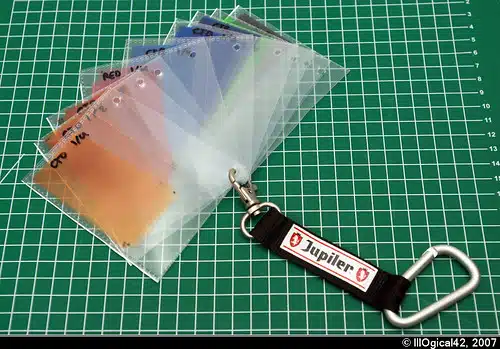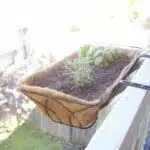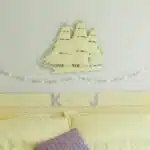As a DIY drawer builder, it is essential to have the knowledge and skills necessary to build a basic drawer. A well-constructed drawer can make storage more efficient and keep belongings organized, leading to a more comfortable living space. With the right tools and materials, anyone can learn how to build a basic DIY drawer.
Building a drawer may seem like a complicated task, but with some guidance and practice, it can be straightforward. The key is to follow each step carefully and take your time during the process. In this article, we will discuss the necessary tools and materials needed for building a basic DIY drawer and provide detailed instructions on how to complete each step. By the end of this article, you will have all the information needed to create your own functional and aesthetically pleasing drawers that will serve you or others for years to come.
Required Tools For Building A Diy Drawer
When building a DIY drawer, having the right tools is crucial to ensure that it not only turns out looking great but is also functional. One essential tool you’ll need is a clamp. A clamp holds the wood in place while you work on it, preventing any movement that can lead to uneven edges or inaccurate cuts. Make sure to use a clamp that’s the right size for your project and always double-check that it’s secure before starting.
Another important aspect of DIY drawer building is safety precautions. You’ll be working with power tools and sharp objects, so it’s crucial to follow proper safety measures to avoid injuries. Wear protective gear like goggles and gloves when handling anything sharp or potentially dangerous. Additionally, keep your work area clean and free of clutter to prevent accidents.
In summary, having the right tools and taking appropriate safety precautions are essential when building a DIY drawer. Make sure you have a clamp on hand to hold your wood in place securely during construction. Also, always prioritize safety by wearing protective gear and keeping your work area tidy. With these considerations in mind, let’s move on to the materials needed for a basic DIY drawer.
Materials Needed For A Basic Diy Drawer
After gathering the necessary tools for building a DIY drawer, the next step is to choose the right materials. Drawer design and wood selection are crucial factors in ensuring that your DIY drawer is both functional and aesthetically pleasing.
When it comes to drawer design, there are various options to choose from, such as dovetail joints or box joints. The choice of joint will depend on your personal preferences and skill level. For beginners, a simple butt joint may be more manageable.
In terms of wood selection, it is recommended to use hardwoods such as oak or birch for their durability and strength. Softwoods like pine can also be used but may not last as long. It’s important to keep in mind the overall look you want to achieve for your DIY drawer when selecting the type of wood to use.
Transition: Now that you have chosen your materials, the next step is measuring and cutting your drawer pieces.
Measuring And Cutting Your Drawer Pieces
Now that you have gathered all the necessary tools and materials, it’s time to measure and cut your drawer pieces. Before proceeding with this step, let’s refresh our memory about the design of a basic DIY drawer. A drawer is essentially a box-like structure consisting of four sides (front, back, and two sides), a bottom panel, and a face panel. Drawer design may vary depending on the builder’s preference, but these basic components remain constant.
One important aspect to consider when measuring your drawer pieces is the joinery technique you will use. Joinery techniques refer to the way in which two pieces of wood are connected or joined together. The most common joinery techniques used for building drawers are butt joints and dovetail joints. Butt joints are simple and easy to make but lack durability compared to dovetail joints which provide added strength due to its interlocking design.
When cutting your drawer pieces, accuracy is key. Use a measuring tape to accurately measure each piece according to your desired dimensions. After measuring, use a saw to make precise cuts on each piece of wood. Remember that each piece should be identical in size and shape for proper assembly later on. Once all pieces have been cut, sand them down using sandpaper or an electric sander to smoothen any rough edges or surfaces before joining them together using your preferred joinery technique.
Transition: Now that we have discussed the importance of joinery techniques in creating strong and durable drawers, it’s time to delve deeper into creating a dovetail joint for added durability.
Creating A Dovetail Joint For Added Durability
When it comes to building a sturdy and long-lasting drawer, the joint used to connect the sides is crucial. While there are several options available, the dovetail joint is widely considered one of the strongest and most durable joints for woodworking projects. Its unique interlocking design provides added strength and stability that can withstand frequent use.
Dovetail joints come in different variations, including through dovetails, half-blind dovetails, and full-blind dovetails. Each variation offers its own set of benefits and drawbacks depending on the desired look and level of difficulty. However, if you’re looking for an alternative to a dovetail joint, some options include dowel joints, rabbet joints, or box joints. Keep in mind that while these alternatives may be easier to construct than a dovetail joint, they may not offer the same level of strength.
When considering the strength comparison between different types of joints, it’s important to note that each joint has its own unique properties. While some may be easier or quicker to construct than others, it’s crucial to choose a joint that will hold up over time with frequent use. For example, while dowel joints may provide adequate strength initially, they have been known to loosen over time with prolonged wear and tear. Ultimately, when constructing your drawer, you want to choose a joint that will provide both durability and longevity.
- Benefits of Using Dovetail Joints:
- Provides added strength and stability
- Can withstand frequent use
- Interlocking design prevents separation
- Aesthetically pleasing appearance
With the knowledge of various types of joints available for constructing drawers as well as their strengths and weaknesses in mind let us delve into how you can construct your drawer front and back without compromising on quality or durability.
Constructing The Drawer Front And Back
Now that the drawer bottom is complete, it’s time to move on to constructing the front and back of the drawer. The first step is selecting the wood type for your drawer assembly. The most common wood types used are maple, birch, and oak, but any strong hardwood will work. You want to ensure that the wood you choose is sturdy enough to withstand regular use.
To begin constructing the front and back of the drawer, measure and cut two pieces of wood to match the length of your drawer sides. Next, glue and clamp these pieces to each end of your completed drawer bottom. Allow ample time for the glue to dry before removing clamps. Once dry, you can sand down any rough edges or excess glue residue.
When selecting a design for your drawer front and back, keep in mind that they will be visible from outside the piece of furniture. Consider adding decorative trim or a recessed panel for added interest. With your design in mind, measure and cut your chosen wood type to fit snugly between the two side pieces already attached. As before, apply glue along all connecting surfaces before clamping together until dry.
Moving forward into building the drawer sides requires careful attention to detail as this section will essentially frame out our completed box structure. With proper planning and execution, you’ll have built a solid foundation for a functional DIY drawer that will serve its purpose well while remaining aesthetically pleasing within its intended space.
Building The Drawer Sides
To build a sturdy and reliable drawer, it is essential to pay close attention to the design of the drawer sides. The sides of the drawer form the foundation on which the entire structure rests, supporting both the weight of the contents and any pressure applied from outside. As such, it is vital to use high-quality wood and precise measurements when building this component.
Begin by selecting a suitable type of wood for your drawer. Choose a material that is strong enough to support heavy loads without warping or cracking under pressure. Opt for hardwoods like oak or maple, as they offer excellent strength and durability compared to softwoods like pine or fir.
Once you have selected your wood, measure and cut two identical pieces for each side of the drawer. Make sure that they are precisely even in length and width to ensure that your drawer sits level. Sand down any rough edges before moving on to assembling the rest of your DIY drawer.
- To make sure your drawers fit perfectly into their designated spot, consider customizing them by adding:
- Angled edges for easier opening
- Decorative handles or pulls
- Unique finishes like paint or stain
- Extra supports or reinforcements
Building a custom-made drawer from scratch is an excellent way to create storage solutions that meet your specific needs. With careful design and precise measurements, you can ensure that every aspect of your DIY project fits seamlessly together. Once you have finished building your sides, move on to assembling the rest of the box for a sturdy and reliable final product.
Assembling The Drawer Box
After building the drawer sides, it’s time to move on to the next step: designing the drawer box. The design of the drawer box is important because it will determine how much weight it can hold and how smoothly it will slide in and out of the cabinet. The most common material for a drawer box is plywood, but you can also use solid wood or MDF board.
When designing your drawer box, take into consideration the size of your cabinet and what you plan on storing in the drawer. This will help you determine the width, depth, and height of the box. You may also want to consider customizing your drawer box with dividers or compartments to better organize your items.
Once you have designed your drawer box, it’s time to assemble it. Start by gluing and clamping all four sides together at a 90-degree angle. Then, attach the bottom panel using glue and nails or screws. Sand down any rough edges and test fit the assembled drawer box into your cabinet before moving on to installing the drawer slides.
Installing Drawer Slides
Like a train on its tracks, installing drawer slides is the next essential step in building a sturdy and functional DIY drawer. Drawer slides come in various types, including side-mount, center-mount, and undermount. Each type has different maintenance requirements and installation methods that will affect the overall durability and smooth operation of your drawer.
Drawer slide maintenance is an important aspect to consider when choosing which type of slide to use. Side-mount slides are easier to maintain than center-mount or undermount slides because they are exposed and easily accessible. Center-mount slides require more upkeep since they are hidden inside the cabinet, while undermount slides need regular inspection to ensure they remain securely attached to the bottom of the drawer box.
Types of drawer slides also differ in their installation methods. Side-mount slides attach directly to the sides of the cabinet or dresser frame, while center-mount and undermount slides require additional brackets for support. Before proceeding with installation, it’s crucial to read the manufacturer’s instructions thoroughly and measure everything precisely for a precise fit.
With proper knowledge on drawer slide maintenance and types of drawer slides available in the market, you can confidently choose which one best suits your needs. In the subsequent section about attaching the drawer front, we’ll discuss how to complete this step with ease so that you can have a fully functional DIY drawer that you can be proud of.
Attaching The Drawer Front
Now that the drawer slides have been installed, it’s time to move on to the next step: attaching the drawer front. The design of your drawer front is entirely up to you, but keep in mind that it should match the overall aesthetic of your project. You can choose from a variety of materials, such as wood or metal, depending on what suits your needs best.
When selecting materials for your drawer front, make sure they are sturdy and durable enough to withstand regular use. In addition, consider the finish you want for your drawer front. Do you want a natural wood look or do you prefer a painted finish? It’s important to sand and prepare the surface before painting or staining for optimal adhesion and longevity of the finish. Remember that any imperfections in the wood will be more noticeable after finishing, so take extra care during this step.
Next up is sanding and finishing your drawer. This is an essential step in ensuring a smooth and polished appearance for your finished product. Start by using coarse-grit sandpaper to remove any roughness or unevenness in the wood. Once you’ve achieved a smooth surface, move on to finer-grit sandpaper until the surface feels silky-smooth to the touch. Afterward, apply a coat of stain or paint if desired. Be sure to follow manufacturer instructions carefully for best results. With these steps completed, your DIY drawer will be ready for use!
Sanding And Finishing Your Drawer
After completing the construction of your DIY drawer, it’s time to move on to the finishing touches. The first step is sanding the entire surface of the drawer. You can use a sanding block or an electric sander, but make sure to start with a coarse grit sandpaper and gradually work your way up to a finer grit for a smooth finish. Take extra care when sanding around the edges and corners, as these areas tend to be rougher.
Once you’ve finished sanding, it’s time to choose your staining techniques. There are many options available, including oil-based stains, water-based stains, gel stains, and more. Each type has its own advantages and disadvantages, so it’s important to do some research before making your choice. Be sure to test out any stain on a small area before applying it to the entire drawer.
Finally, choosing hardware for your DIY drawer is an important step in completing its look and functionality. Consider whether you want knobs or handles and what style will best match your decor. Measure carefully before drilling holes for installation and use screws that are long enough to secure the hardware firmly in place without going all the way through the drawer face. With these finishing touches complete, you’ll have a beautiful and functional DIY drawer that will serve you well for years to come.
As you move on from finishing your drawer with staining techniques and hardware selection, adding drawer pulls or handles is an excellent next step. This allows for easy opening and closing of the drawers while also adding another level of style and personalization to your project. Keep in mind that there are many types of pulls and handles available, such as cup pulls or bar handles, so take some time to consider which will work best with both functionally and aesthetically with your particular project design.
Adding Drawer Pulls Or Handles
- When it comes to adding drawer pulls or handles, it is important to select the right type that fits the style of the piece and its intended purpose.
- Carefully measuring the drawer opening and the size of the pulls or handles is essential before installation.
- Installing the drawer pulls or handles requires pre-drilling holes for mounting screws and attaching them with screws or bolts.
- Depending on the type of material used for the pulls or handles, different tools such as a drill, screwdriver, and wrench may be needed for installation.
- While drawer knobs are generally smaller than pulls and require less force to open, pulls are usually larger and can be used to open drawers with heavier objects inside.
- When choosing drawer pulls or handles, it is important to consider the overall design of the piece and the amount of force required to open the drawer.
Choosing The Type
When building a DIY drawer, one of the crucial aspects to consider is the type of drawer pull or handle to use. This decision can impact both the functionality and aesthetics of the final product. The first step in choosing a drawer pull or handle is to consider the materials used in constructing the drawer. For instance, if you have used wood for your drawers, you may want to opt for metal pulls that offer a striking contrast.
Another factor to consider when selecting a drawer pull or handle is its design style. There are various designs available, including traditional knobs, contemporary cup pulls, and sleek bar handles. Knobs are an excellent option for those who prefer simplicity since they take up minimal space and come in an array of shapes and sizes. On the other hand, cup pulls offer an elegant touch while being easy to grip. If you want something that makes more of a statement, bar handles can add a modern flair.
Ultimately, your choice of drawer pull or handle will depend on your personal preference and how you plan to use your DIY drawer. However, by considering both the materials used in constructing your drawer and its design style options, you can ensure that your final product looks as good as it functions. Keep these factors in mind when making your selection to create a beautiful and functional DIY drawer that will serve you well for years to come.
Installing
After choosing the right drawer pulls or handles for your DIY drawer, the next step is to install them properly. Installing drawer pulls or handles may seem like a simple task, but it requires some level of expertise to ensure that they are securely attached and function effectively. To get started, you need to consider the type of drawer slides that you have installed. There are two main types of drawer slide options: side-mount and under-mount.
If you have side-mount slides, installing your drawer pulls or handles is relatively easy. You will need to measure and mark where you want the pull or handle to be positioned on the front of your drawer. Next, drill pilot holes in these locations and screw in your pull or handle using a screwdriver. For under-mount slides, however, installation techniques may vary depending on the manufacturer’s instructions. It’s essential to follow these instructions carefully to avoid damaging the slides or compromising their functionality.
Before installing your pulls or handles, ensure that your drawers are properly installed in their designated spaces within your furniture piece. Once you’ve done this step, positioning and attaching the pulls/handles should be relatively straightforward. It’s worth noting that accuracy is key when installing pulls/handles since even minor deviations can cause problems with functionality down the line. By following these guidelines for proper installation techniques, you can enjoy a well-built DIY project that meets both form and function requirements.
Measurements
When it comes to adding drawer pulls or handles to your DIY project, precision is key. One of the most common mistakes that beginner builders make is not properly measuring where they want their pulls or handles to be installed. This can lead to uneven placement and a less functional final product. As an expert in DIY drawer building, I recommend taking the time to measure carefully before drilling any holes.
To ensure accuracy, start by marking where you want your pulls or handles to be positioned on the front of your drawer. Use a ruler or tape measure to make sure these marks are evenly spaced and at the same height on each drawer if you are installing multiple pulls/handles. Once you have marked your spots, use a level to double-check that they are straight and even. Any deviation from this step can result in a less than perfect finish.
After marking your spots, it’s time to drill pilot holes for your screws. Make sure you choose the right size drill bit for your screws so that they fit snugly without being too tight or loose. Precision techniques should be used when drilling so that you do not damage the wood surface around the hole. Once this step is complete, screw in your pulls or handles using a screwdriver and admire your handiwork! By following these simple steps with precision techniques, you can create beautiful and functional drawers that will last for years to come.
Testing Your Drawer For Proper Fit
To ensure that your DIY drawer will function properly, it is important to test it for proper fit. There are two main aspects to consider when testing: drawer slide options and drawer alignment techniques. First, let’s examine the various types of drawer slides available.
The most common type of slide is a side mount slide, where the slides are attached to the sides of both the drawer and the cabinet. Another option is an undermount slide, where the slides are attached to the bottom of the drawer and inside of the cabinet. Finally, there are center mount slides that attach to the bottom center of both the drawer and cabinet. Each option has its own advantages and disadvantages, so choose based on your specific needs.
Once you have chosen your drawer slide option, it is essential to align your drawers properly. One technique for ensuring proper alignment is measuring from corner to corner diagonally across both sides of the drawer box. The measurements should be equal if your drawers are parallel with each other. Additionally, check that there is enough clearance between drawers so they do not rub against each other when opening or closing. With these techniques in mind, you can test your DIY drawers for proper fit before installation.
Transitioning into our next section about troubleshooting common drawer-building issues, it’s important to remember that even with careful planning and execution, problems can arise during construction. Let’s explore some common issues and how to fix them in order to achieve a high-quality finished product.
Troubleshooting Common Drawer-Building Issues
Drawer building can be a fun and rewarding project, but it’s not without its challenges. One common issue that DIYers encounter is drawer alignment. A misaligned drawer can be frustrating and even dangerous, as it may not slide smoothly in and out of the cabinet. To avoid this problem, make sure to measure carefully when building your drawers and use a square to ensure everything is aligned properly.
Another issue that many people face when building drawers is sticking. This can happen for a number of reasons, including warping wood, uneven surfaces, or improper hardware installation. To fix a sticking drawer, start by checking the tracks to make sure they are clean and free from debris. If that doesn’t work, try sanding down any rough spots on the drawer or the cabinet itself. You may also need to adjust the hardware to ensure a smooth glide.
While these issues can be frustrating, don’t let them discourage you from pursuing your DIY drawer-building project. With some troubleshooting and patience, you can overcome these challenges and create a functional and beautiful piece of furniture for your home. In the next section, we’ll explore some tips and tricks that can help take your drawer-building skills to the next level and give you a truly professional-looking finished product.
Tips And Tricks For A Professional-Looking Drawer
As a DIY drawer builder, you may have experienced a number of common issues while putting together your latest project. But don’t worry – with the right tips and tricks, you can create a professional-looking drawer that will impress even the most discerning eyes.
One key factor to consider when building a drawer is choosing the right materials. While plywood is often the go-to choice for many builders, there are other options available that can provide additional strength and durability. For example, solid wood or engineered wood products like MDF can be excellent choices for drawers that will see heavy use.
Another important consideration is finishing techniques. A properly finished drawer can add both beauty and protection to your project. Stain or paint can help bring out the natural beauty of the wood grain, while polyurethane or wax coatings can help protect against scratches and wear.
Now that you have some basic tips and tricks under your belt, it’s time to start exploring alternative drawer building methods and styles. From dovetail joints to hidden runners, there are countless ways to build a drawer that suits your needs and preferences. So get creative, experiment with different techniques, and above all else – have fun!
Alternative Drawer Building Methods And Styles
As a DIY drawer builder, it’s important to understand that there are various approaches to designing and building drawers. In fact, the design of a drawer can significantly impact its functionality, durability, and aesthetic appeal. When considering design options for your DIY drawer, you may want to think about incorporating unique finishes such as varnishes or paints that can add character and style to your project.
One alternative method for building a drawer is the use of dovetail joints. Dovetail joints are strong interlocking connections between two pieces of wood. They require precision and skill but result in a strong joint that can withstand heavy loads. The dovetail joint creates an attractive decorative element on the outside of the drawer while providing structural integrity on the inside.
Another method for adding uniqueness to your DIY drawer is through custom finishes. You can use a variety of techniques such as staining, painting, or distressing to create a one-of-a-kind look for your project. For example, using milk paint can give a vintage feel while using metallic paint can create an industrial look. These finishes not only provide aesthetic value but also protect the wood from damage caused by humidity, temperature changes, or scratches.
In summary, when building DIY drawers, there are several alternative methods and styles available beyond basic designs. Incorporating unique finishes such as varnishes or paints can add character and style to your project while also protecting the wood from damage over time. Additionally, choosing alternative joint types like dovetail joints provides both aesthetic value and structural integrity to your DIY drawers. So if you’re looking to take your DIY drawer-building skills to the next level, consider experimenting with different styles and techniques!
Conclusion
In conclusion, building a basic DIY drawer is a rewarding skill to acquire. It allows you to customize your furniture and add a personal touch to your home. Just like constructing a sturdy drawer, learning any new skill requires patience and practice. Remember that mistakes are inevitable, but they can also be valuable learning experiences.
As a seasoned DIY drawer builder, I can attest that the process of creating something with your own hands is akin to planting a seed and watching it grow into a beautiful plant. It starts with selecting the right tools and materials, measuring carefully, cutting precisely, and constructing patiently. Just like gardening requires consistent care and attention, building drawers entails dedication and perseverance.
So go ahead and give it a try! With these steps as your guide, you’ll soon be on your way to creating professional-looking drawers that are both functional and stylish. And like any good gardener knows, the satisfaction of seeing your hard work pay off is well worth the effort!
Image Credits
- “Gel holders 1” by IllOgical43 (featured)



















![How To Repair Rotted Wood 20 Texture : Altario Buick Estate Wagon : Rotting Faux Wood Paneling [1 of 2]](https://green-life.blog/wp-content/uploads/2023/05/z1CersK-gCjq-150x150.jpg.webp)









